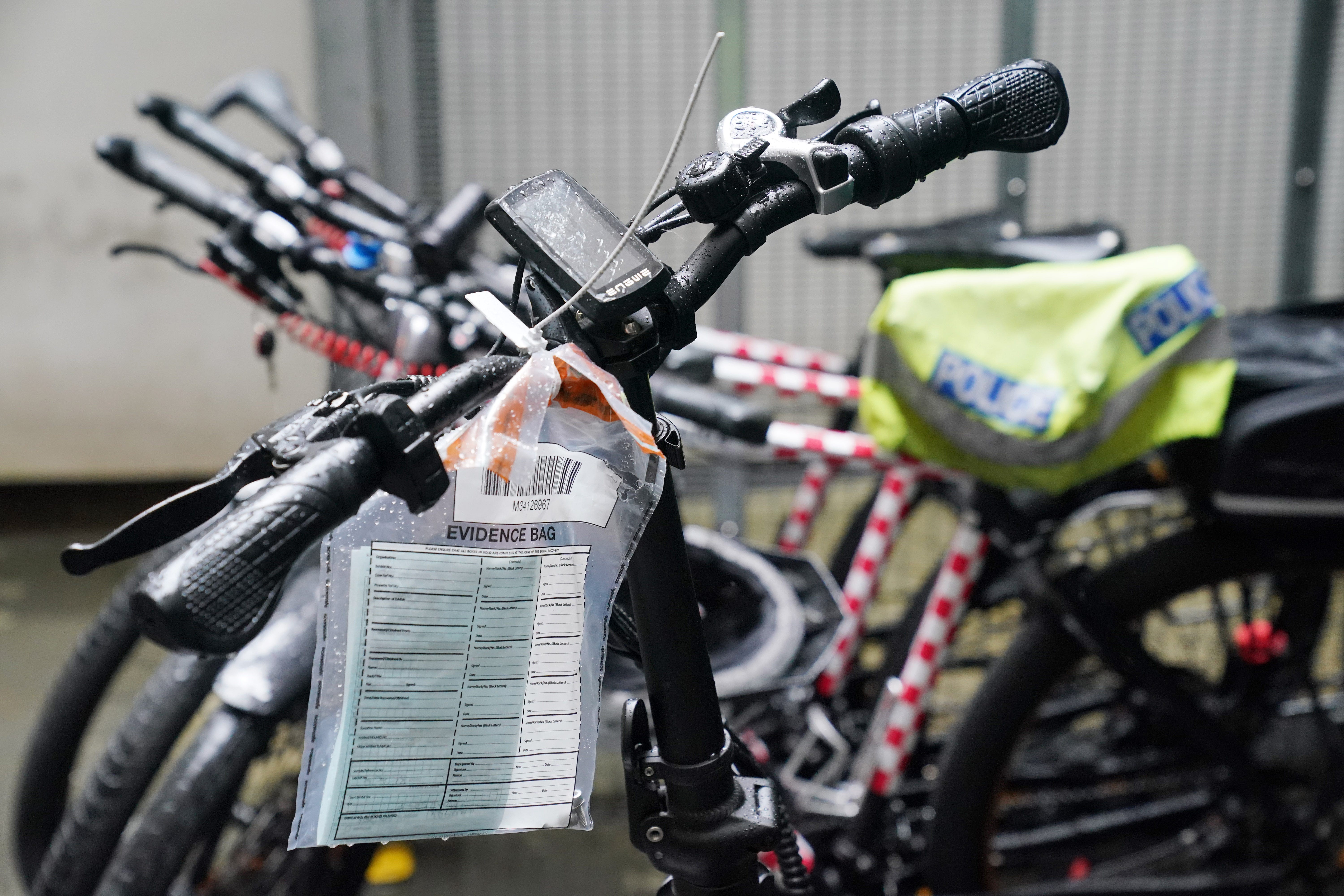What are the rules around e-bikes?
What are they, who can ride them and where can they be used?

Police seizures of e-bikes have soared.
Here the PA news agency answers 10 key questions on the issue.
– What are e-bikes?
Bikes with a rechargeable battery and an electric motor, meaning they are generally heavier than normal bikes.
– Who can ride an e-bike?
Anyone aged 14 or over.
– Do riders need a licence or helmet?
No.
– Do e-bikes need to be registered, taxed or insured?
No.
– Where can e-bikes be ridden?
Anywhere a conventional bike can be used, including on cycle lanes and paths as well as roads.
– What are the rules for e-bike electric motors?
They must have a maximum power output of 250 watts and must cut out when the e-bike reaches a speed of 15.5mph.
– What is the requirement for e-bikes that can be propelled without pedalling?
Machines with a so-called twist and go throttle – meaning the motor can work without the pedals being turned – must be type approved by the Government, which confirms they meet certain regulatory standards.
– What must e-bikes display?
Either the power output or the manufacturer of the motor, and either the battery’s voltage or the maximum speed of the bike with electric assistance.
– What if a machine fails to meet these requirements?
It is classed as a motorbike or moped and must be registered and taxed.
Riders must hold a driving licence and wear a helmet.
– What are the main concerns about illegally modified e-bikes?
That their speed and weight is a potentially a lethal combination in collisions with pedestrians.
Bookmark popover
Removed from bookmarks